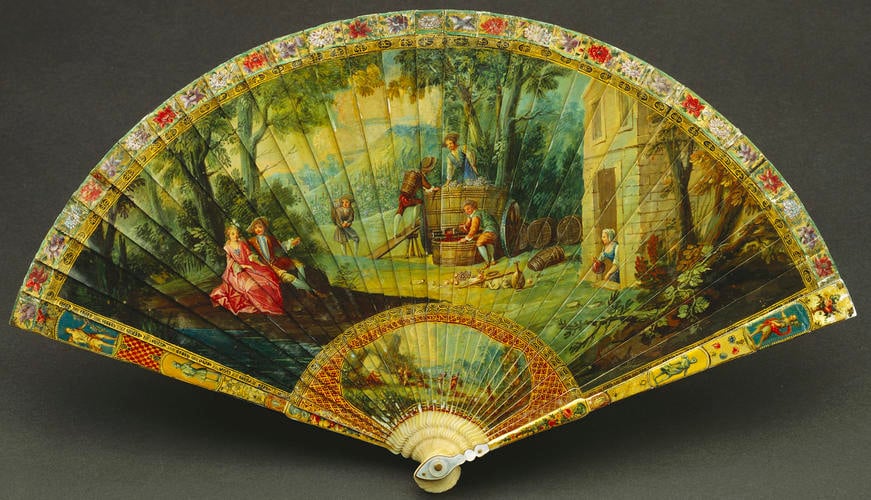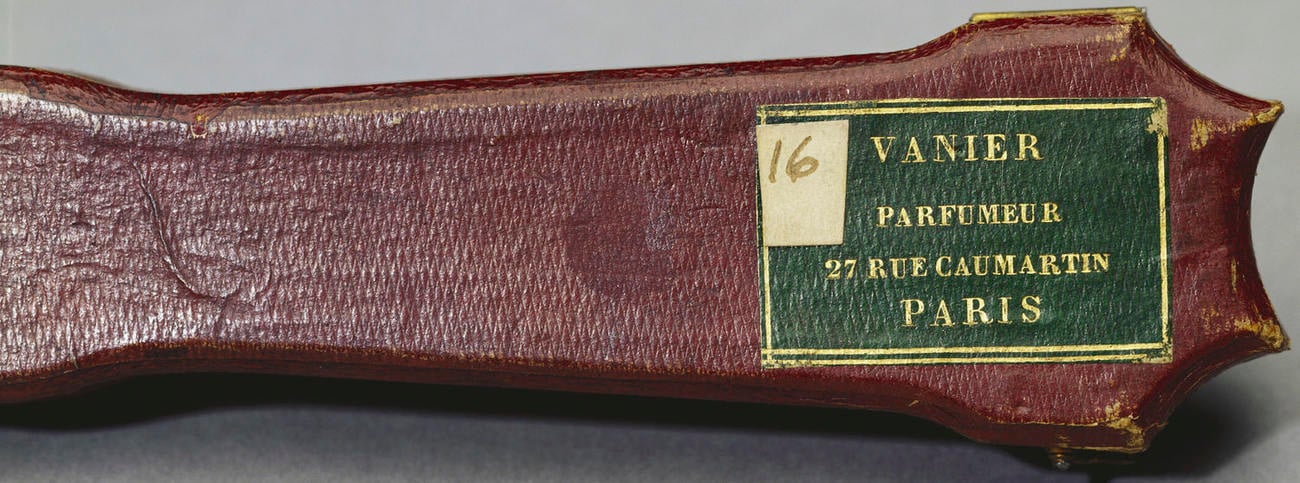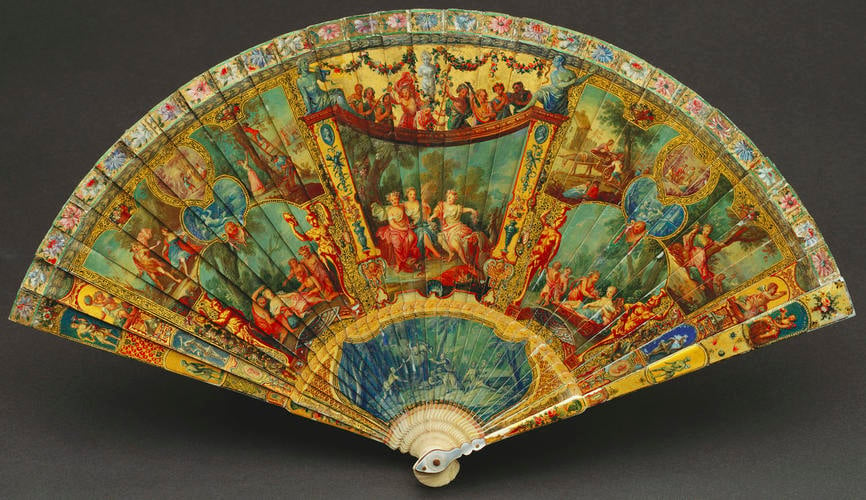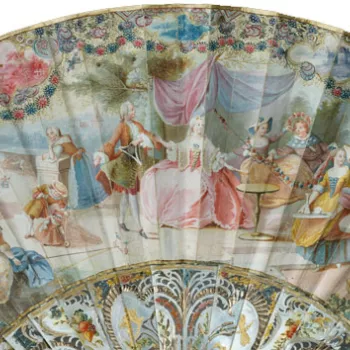'Marie-Antoinette's Fan' c. 1720-30
Ivory brisé fan; matching ivory and mother-of-pearl guards, ivory sticks (2 + 29) | 21.3 cm (guardstick) | RCIN 25092

France
'Marie-Antoinette's Fan' c. 1720-30

France
'Marie-Antoinette's Fan' c. 1720-30

France
'Marie-Antoinette's Fan' c. 1720-30



-
This fan was acquired for Queen Victoria in Paris by her aunt, Queen Louise of the Belgians (1812-50). The purchase was made in late December 1839, between Queen Victoria’s proposal of marriage to Prince Albert in October 1839 and the royal wedding in February 1840. Queen Louise was the elder daughter of Louis-Philippe, King of the French, and his wife Marie-Amélie. In 1832 she had married Queen Victoria’s favourite uncle, Leopold I, King of the Belgians. From the time of their first meeting in 1835 the future Queen Victoria and Queen Louise became close friends. During the next few years their correspondence includes frequent mentions of Parisian style and fashion. Queen Louise sent elegant Parisian dresses, cravats, ribbons and bonnets to England, where they were received with raptures by her young niece. Queen Louise’s younger sister, Clémentine, was also involved in Queen Victoria’s commissions.
The first mention of the purchase of this fan occurs in a letter from Queen Louise to Queen Victoria of 25 November 1839:
I send you with this letter 3 fans which Clémentine choose [sic] for you and I enclose the bill which she was obliged to pay in the shop - as she would not [declare] her name and could not venture to give yours . . . I send herewith a magnificent fan which belonged formerly to Marie Antoinette. She says it is remarkably fine but it is dear it costs 500 f. about £20.
The fans were dispatched on 23 December, under cover of another letter from Queen Louise: ‘the fans which you ordered are going with this letter. I hope you will like them. The small one which belonged to Marie Antoinette is I think very curious.’ Queen Victoria recorded in her Journal for 26 December that after dinner at Windsor Castle she had showed her Prime Minister, Lord Melbourne, ‘a very curious fan (not a very large one, but beautifully painted)’ which had just arrived from Paris ‘and which belonged to Marie Antoinette. Lord M. admired it very much, and said, it was ‘very pretty’. He the other day admired several fans of mine.’ Four days later Queen Louise wrote to Queen Victoria: ‘I am very glad to hear that you approved of my modest offering [a dress] and that you were pleased with the fans. That of Marie Antoinette is really curious and I am glad that you purchased it. It would have been a pity if it had fallen into bad hands.’
This is a rare example of a painted and lacquered brisé fan from the early eighteenth century. Although such fans are normally described as vernis Martin, the lacquering technique used is much simpler than the layers of varnish required on japanned furniture. Parts of the fan were probably largely overpainted in the 1820s, but in other areas the decoration is of the highest quality. It is unlikely that the reputed association with Queen Marie-Antoinette (1755-93) can be proved; the fan was certainly not made for her as brisé fans had gone out of fashion c. 1730. In the 1860s and 1870s, when objects associated with Marie-Antoinette were particularly popular, this fan enjoyed considerable fame. It was reproduced by the Arundel Society in 1871 and four years later was described by Blondel as ‘Le richissime éventail Louis XIV’, a ‘chef-d’oeuvre’.
Although Queen Victoria’s invoice for the fan does not appear to have survived, the original leather-covered box - with the trade label of Vanier, Parfumeur - remains in the Royal Collection. Vanier had supplied the eighteenth-century fans to the Duchesse de Berry for use at her fancy-dress ball at the Tuileries in 1829, and a group of so-called vernis Martin fans was lent by M. Chardin of Maison Vanier to the 1870 loan exhibition.
Text adapted from Unfolding Pictures: Fans in the Royal Collection 2005Provenance
Reputedly, Queen Marie-Antoinette; purchased in Paris by Queen Louise of the Belgians for Queen Victoria, 1839; bequeathed to King Edward VII, 1901
-
Creator(s)
(nationality)Acquirer(s)
-
Medium and techniques
Ivory brisé fan; matching ivory and mother-of-pearl guards, ivory sticks (2 + 29)
Measurements
21.3 cm (guardstick)
Category
Object type(s)








